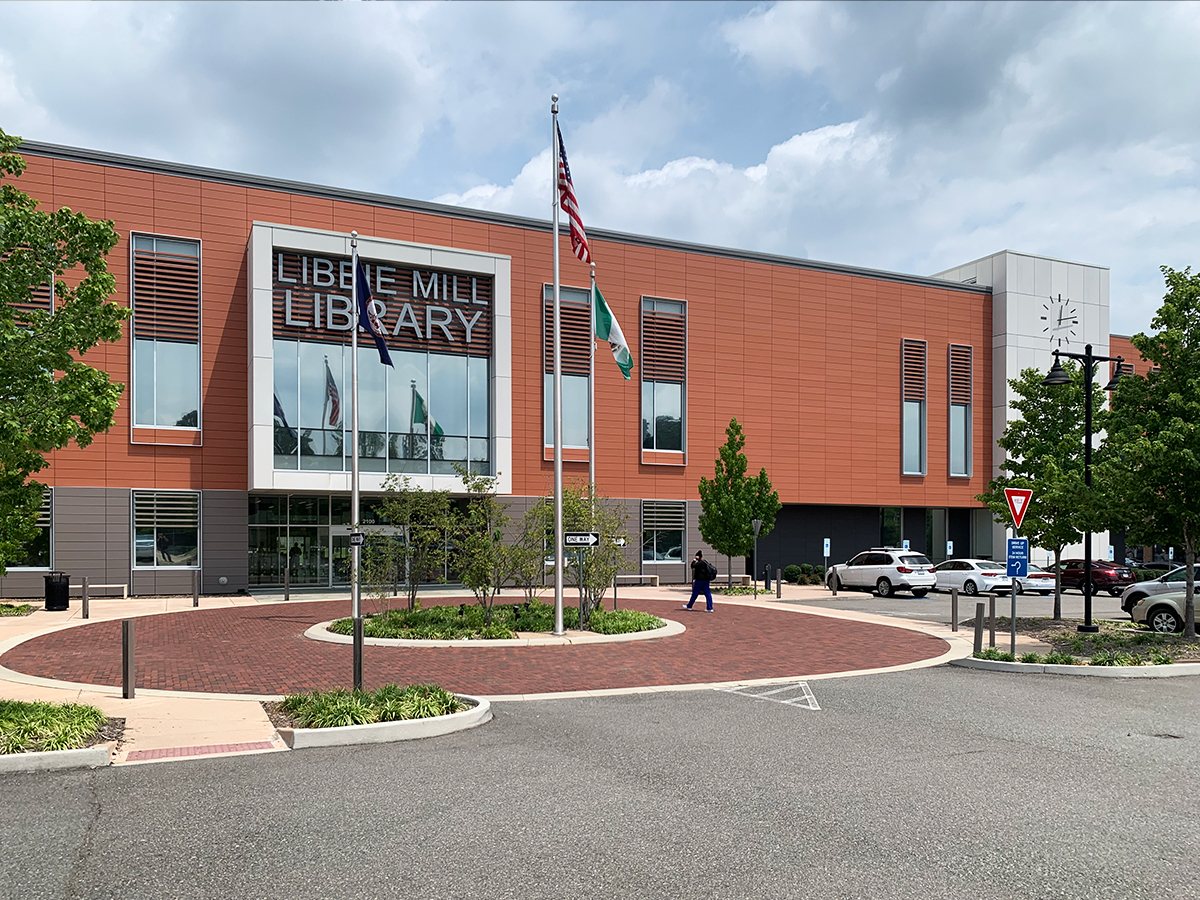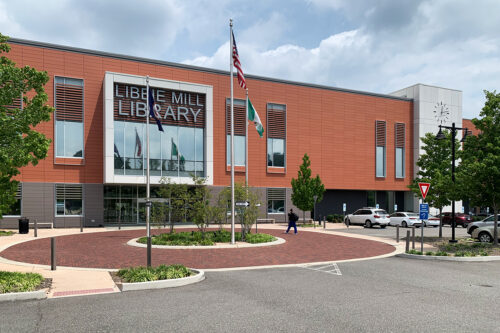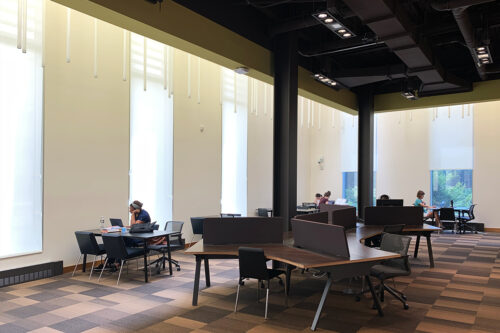Tappé Architects with BCWH Architects
2016
2100 Libbie Lake E St
In the age of the internet, e-readers, and online bookshops, the status of the public library might seem threatened, but in 2016, the expansive new Libbie Mill Library opened in western Henrico County.
The library, which the county bills as a “knowledge center,” contains the familiar stacks, reading rooms, reference desks, and a children’s area. To these fixtures are added computer labs, a maker space with 3D printers, and lecture rooms for classes and public programs. As in most libraries today, the open lounges and desk spaces attract students, the self-employed, and workers displaced from traditional offices by COVID-19. Not everyone, it seems, wants to work from home.
The architectural expression of the library is jumbled and box-like. The semi-random scattering of panels, vents, and projecting windows will be familiar to any observer of contemporary design trends. But at certain moments the architects, Tappé Architects of Boston in collaboration with local firm BCWH, rise above the mediocre. As has become typical in libraries, the arm chairs for reading sit near large, bright windows while stacks and desk spaces are placed deeper inside, minimizing glare. But in a clever interior maneuver, the architects sank the reading area a few steps below the main floor level, providing a clear view over the readers for those further inside. On the exterior, the warmly-colored, brick-like cladding of the upper levels gives way to an inviting, glassy ground floor punctuated by bay window seating. The readers curled up in these window seats advertise the activities of the library to passing pedestrians.
The north façade of the library opens onto a terrace and amphitheater-like space that steps down to a pond. The pond forms the centerpiece of both a small park and the larger “Libbie Mill Midtown” real estate development with which the library shares its name. This relatively central tract of land, located between Staples Mill Road and West Broad Street, was recently home to an aging housing complex. Henrico’s overhaul of the area is a part of its larger effort to add density and a greater mix of uses to its ballooning western suburbs.
In this sterile quarter of Henrico, with nearby apartments still rising from their foundations, the Libbie Mill library adds a measure of urbanity in the way that only a free and public institution can. This sensibly designed and solidly built library will not go down in the annals of architectural history, but it may serve as the basis for the civic life of this nascent district.
DOK









Write a Comment